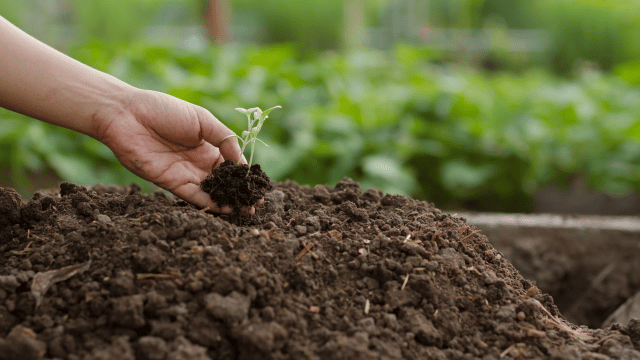As a big fan of cooking, I’ve always been amazed by how fresh herbs make food taste and smell so good. Taking a handful of basil leaves from my own herb yard and adding them to a simple pasta sauce makes it taste even better. I’m going to show you the wonderful world of fresh herbs and how they can change the way you cook in this guide. This guide will tell you everything you need to know about herbs, from the health benefits of fresh herbs to the most common types and how to use them, as well as how to grow, gather, and store them.
Benefits of using fresh herbs
Not only does using fresh herbs in your cooking make your food taste better, but it’s also good for you in many ways. Fresh herbs are much higher in essential oils, antioxidants, and vitamins than dried plants. These natural chemicals not only make food taste better, but they can also help with health problems. For instance, basil is known to help with inflammation, and cilantro is known to help digestion. It is possible to make your food taste better and be healthier by adding fresh herbs to it.
Adding fresh flowers to your food is another cheap way to make it taste better. Instead of using store-bought seasonings and sauces, which often have added chemicals and preservatives, you can make culinary wonders with just a handful of fresh herbs. Fresh herbs can bring any dish to a whole new level and keep your wallet happy. They’re great for making marinades, salad dressings, and sauces.
Popular types of fresh herbs and their uses
There are so many amazing fresh herbs to choose from, and each one has its own taste and use in cooking. Let’s look at some of the most common types and how they can be used in different ways:
People love basil because it tastes sweet and a little spicy. It is an important part of Mediterranean food and goes well with olive oil, tomatoes, and cheese. Adding it to soups, pasta sauces, or even drinks will give them a fresh taste.
Rosemary: Rosemary is great in savory recipes because it smells like wood and tastes strong. Cooked meats, potatoes, and root veggies go well with it. You can also add rosemary to olive oil to give your sauces and marinades a nice scent.
Peppermint: Peppermint is used in both sweet and savory foods because it cools and refreshes. It goes well with fruits like watermelon and berries, and it makes salads and drinks taste even better. You can even make mint tea, which is peaceful and smells great.
Thyme is a herb that goes well with chicken, fish, and vegetables. It has a mild earthy taste. It’s often put in soups, stews, and marinades. Thyme can also be added to vinegar and oils to make them smell different.
Growing your own fresh herbs at home
Growing your own fresh flowers is one of the best things you can do as a home cook. This plant not only makes it easy to get different tastes, but it also brings some green into your home. Right now, here are some tips to help you start growing herbs:
Pick out the right place: Find a spot in your yard or on your balcony that gets at least six hours of sunlight every day. Most herbs do best where they are sunny. You can grow flowers inside near a window if you don’t have room outside.
Pick your plants. To begin, choose a few herbs that you use often in your cooking. Basil, mint, parsley, and chives are all good picks for beginners. You can either buy young plants or start seeds and grow them.
Give them the right conditions. Herbs like soil that drains well, so use potting mix made just for herbs or add perlite to help the soil drain better. Regularly water your flowers, but don’t give them too much water; that will cause root rot.
Be careful when you gather. You can start harvesting your herbs when they are a good size. Cut the stems just above a leaf node with pruning shears or sharp knives. This will help the plants grow bushier and make sure they always have fresh veggies.
Enjoy the results of your hard work: use herbs you grew yourself in your food and enjoy the flavors you helped grow. Try mixing things in new ways and be artistic with your recipes. With flowers that you’ve grown yourself, there’s nothing better than using them.
Harvesting and storing fresh herbs
When you pick fresh flowers, the right time is very important. Early in the morning, after the dew has dried but before the sun gets too hot, is the best time to pick. This is the best time for the herbs to smell and taste. Here are some general tips on how to pick and store different kinds of herbs:
When you harvest leafy herbs like basil, cilantro, and parsley, start at the bottom of the plant and work your way up to the top leaves. This will help the plant grow higher and make sure it always has fresh leaves. Put the herbs you just picked in a bowl of water to get rid of any bugs or dirt, and then use a paper towel to dry them. They can be kept in the fridge for up to a week in a plastic bag that is only lightly wrapped.
Woody herbs, like sage, rosemary, and thyme, are picked by cutting leaves or branches off the plant. Take out any leaves that are broken or changing color. Run cold water over them and dry them with a towel. Tie the sprigs together with a string or an elastic band. Hang them upside down in a cool place with good air flow until they are totally dry. Once they are dry, put them away in a container that won’t let air in and out of direct sunlight.
Delicate herbs, like dill, tarragon, and mint: These herbs taste best when they are fresh, but if you have a lot of them, you can freeze them to keep them fresh. Clean the herbs, cut them into small pieces, and take the leaves off the stems. Cut up some plants and put them in an ice cube tray. Add water to each space and freeze. Put the herb cubes in a freezer bag after they are frozen and keep them there for up to six months.
Tips for using fresh herbs in recipes
Using fresh herbs in your recipes can take your culinary creations to new heights. Here are some tips to help you make the most of these flavorful additions:
Start with small amounts: Fresh herbs can be quite potent, so it’s best to start with smaller quantities and adjust to taste. You can always add more if needed.
Add at the right time: Different herbs have different cooking times, so it’s important to add them at the right stage of your recipe. Delicate herbs like basil and parsley are best added towards the end of cooking to retain their fresh flavors, while heartier herbs like rosemary and thyme can be added earlier to infuse their aromas.
Use the whole herb: Don’t limit yourself to just the leaves of the herb. Many herbs, like cilantro and dill, have flavorful stems that can be used in cooking. Finely chop the stems and use them along with the leaves for added flavor and texture.
Experiment with combinations: Don’t be afraid to mix and match different herbs in your recipes. Combining herbs like rosemary and thyme in a marinade or basil and mint in a salad can create delicious flavor profiles that will surprise and delight your taste buds.
Garnish with flair: Use fresh herbs as a garnish to add a pop of color and freshness to your dishes. Sprinkle chopped herbs on top of soups, stews, salads, or roasted vegetables for an eye-catching presentation.
Recipes using fresh herbs
Now that you know more about fresh herbs, let’s use them in some delicious recipes:
Caprese Salad with Fresh Basil: This traditional Italian salad is a love letter to fresh tastes. Put down slices of ripe tomatoes and fresh cheese, and then sprinkle with basil leaves that have been torn. Use extra virgin olive oil, balsamic glaze, and a pinch of salt and pepper to dress the food. Serve as a light lunch or a cool starter.
seRoasted Chicken with Lemon and Rosemary: Add the fragrant tastes of lemon and rosemary to your roasted chicken. Mix lemon peel, chopped romary, minced garlic, salt, and pepper together and rub it all over a whole chicken. Place it in the oven and cook it until it turns brown and juicy. The chicken is now tender and tasty, with hints of herbs and lemon.
Tzatziki with Mint and Cucumber: This cool Greek dip is great for hot summer days. Grate a cucumber and squeeze out as much water as you can. Greek yogurt, crushed garlic, chopped mint leaves, lemon juice, salt, and pepper should all be added to it. Put it on pita bread or use it as a sauce for grilled foods.
Tomato and Basil Bruschetta: This popular Italian starter is sure to please everyone. Toast some bread until it’s crispy, and then rub a garlic clove on each slice. Grate some ripe tomatoes and basil leaves on top. Add some extra virgin olive oil and salt and pepper to taste. It’s a simple but classy dish that shows off summer tastes.
Where to buy fresh herbs
Having fresh herbs grow in your own garden is fun, but sometimes it’s easier to just buy them. These are some places you can find pretty good fresh herbs:
Farmers’ markets: You can get fresh plants straight from the growers at local farmers’ markets. You’ll be helping out small businesses in your area, and you’ll also be able to pick from a lot of fresh plants.
Grocery stores: Most grocery stores have an area for fresh food, which includes herbs. Keep an eye out for herbs that are brightly colored and don’t show any signs of fading or changing color. Choose organic greens if you can to make sure they are free of pesticides.
Online suppliers of herbs: There are a number of websites that send fresh herbs right to your door. These companies usually have more kinds of herbs, and they can be helpful if you can’t get to local stores.
Using dried herbs as a substitute
Herbs that are fresh are better because they taste better, but sometimes you may need to use dry herbs instead. To get the most out of dried herbs, here are some tips:
Use less: Since dried herbs have more taste than fresh herbs, you’ll only need a small amount each time. As a general rule, when a recipe calls for fresh herbs, use three times as much for dried herbs.
It’s best to add dried herbs earlier in the cooking process because it takes longer for them to release their tastes. This lets them get wet again and add their flavors to the dish.
Crush them before you use them: To get the essential oils out of dried herbs, press them together or use a mortar and pestle to crush them. This will help bring back their smells and tastes.
How to Store Them: To keep the tastes of dried herbs, keep them in containers that keep air out and away from heat, light, and water. Make sure to check the expiration date and change them often to get the best flavor.


